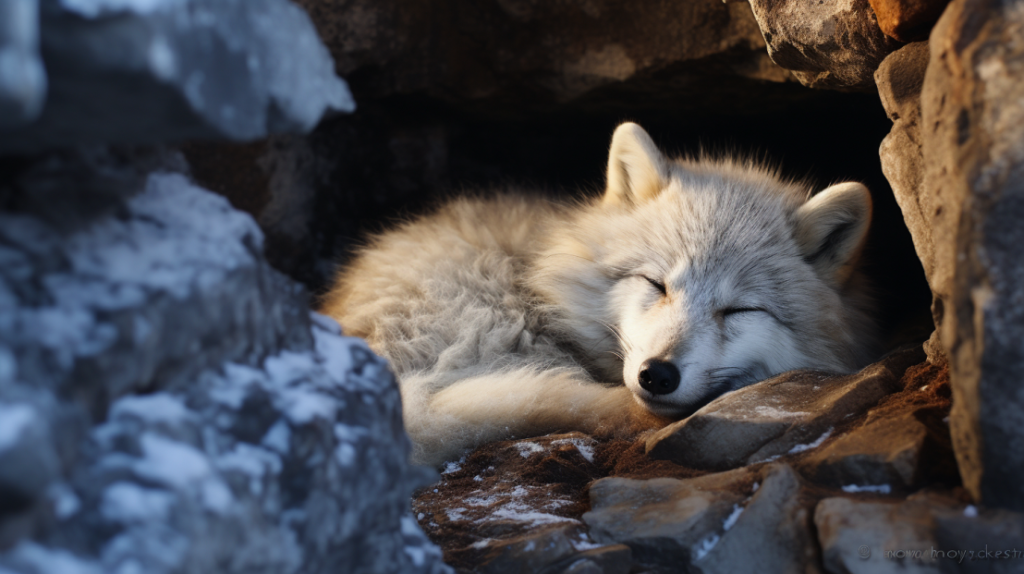Do foxes hibernate? This question often arises as we observe various animals’ behaviors during the winter months. In the case of foxes, they do not undergo true hibernation like some other animals. However, they do display a change in behavior known as “winter lethargy” or “carnivore lethargy.” Let’s dive deeper into the fascinating world of foxes and explore the truth behind their hibernation habits.
Understanding Foxes’ Natural Behavior
Before we delve into the specifics of whether or not foxes hibernate, let’s take a moment to understand their natural behavior. Foxes, belonging to the Canidae family, are highly adaptable and resilient creatures. They are agile hunters, primarily carnivorous, and have a varied diet that includes small mammals, birds, fruits, and insects.
Foxes are solitary animals, marking their territories with scent posts and vocalizing through a series of barks, screams, and howls. Their ability to thrive in various habitats has made them successful in urban, suburban, and rural environments alike. Now that we have a basic understanding of foxes, let’s explore their hibernation habits.
What is Hibernation?
Before discussing fox hibernation, it is crucial to understand what hibernation entails. Hibernation is a state of torpor that allows animals to conserve energy during periods of scarce resources or harsh weather conditions. During this period, an animal’s metabolic rate significantly decreases, resulting in a reduced need for food and a slower heart rate. These physiological changes enable animals to survive without depleting their energy reserves.
Foxes and Hibernation: The Truth Unveiled
Contrary to popular belief, foxes do not experience true hibernation. They exhibit a behavior change during the winter months that resembles a form of hibernation; however, it is not the same as the hibernation observed in bears or groundhogs. This phenomenon is often referred to as “winter lethargy” or “carnivore lethargy.”
Winter Lethargy: A Closer Look
During winter lethargy, foxes reduce their activity levels and tend to stay within their dens for extended periods. This behavior helps them conserve energy during times of limited food availability and extreme weather conditions. Foxes may enter a state of rest, commonly known as “couching,” where they curl up and remain still for extended periods.
Adaptations for Survival
Foxes have developed various physiological adaptations to survive the challenges of winter. Their thick fur coat acts as excellent insulation, keeping them warm and protected from the cold. In preparation for winter, foxes store excess body fat, serving as an energy reserve to sustain them during periods of scarcity. By utilizing these adaptations and altering their behavior, foxes can survive the winter without undergoing true hibernation.
Factors Influencing Hibernation-Like Behavior in Foxes
Several factors influence when and how foxes display hibernation-like behavior. Let’s take a closer look at these factors:
- Weather Conditions:
Harsh weather conditions, particularly extreme cold or deep snow, play a significant role in triggering winter lethargy in foxes. The scarcity of food during these conditions intensifies the need for energy conservation. - Availability of Food:
Foxes primarily rely on small mammals like mice and rabbits for sustenance. When these prey species become less abundant during the winter, foxes enter a state of winter lethargy to compensate for the limited food availability. - Reproductive Cycle:
Female foxes may exhibit winter lethargy during the late stages of pregnancy or while nursing their young. This adaptive behavior ensures the survival of both the mother and her offspring when resources are scarce.
By considering these factors, we can understand how foxes adapt their behavior to maximize their chances of survival during the winter months.
Energy Conservation
One of the primary benefits of winter lethargy for foxes is energy conservation. By reducing their activity levels and metabolism, foxes can conserve energy and rely on their fat reserves during periods of limited food availability. This adaptation allows them to endure long periods of time without actively searching for food, ensuring their survival throughout the harsh winter.
Protection from Harsh Weather
Another advantage of winter lethargy is that it provides foxes with protection from the biting cold and other hazards associated with severe winter weather. By staying within the cozy confines of their dens, foxes can shield themselves from the elements and avoid the risk of exposure-related injuries or illnesses.
Reproduction and Survival
For female foxes, winter lethargy plays a crucial role in ensuring the successful birth and rearing of their offspring, even in challenging environmental conditions. By entering a state of reduced activity, pregnant foxes can conserve energy and allocate enough resources to carry their pregnancy to full term. Additionally, winter lethargy can help lactating foxes save energy while nursing their young, supporting their survival during periods of scarcity.
Understanding these benefits helps us appreciate the ingenious strategies that foxes have developed to withstand the challenges of winter.

What Differentiates Foxes from True Hibernators?
While foxes exhibit behaviors reminiscent of hibernation during winter lethargy, there are significant differences that distinguish them from true hibernators.
A Decrease in Activity, Not True Hibernation
Unlike true hibernators, such as bears or groundhogs, foxes do not enter a deep sleep during winter lethargy. While their activity levels decrease significantly, they can still wake up and move around if necessary. This differs from true hibernators, which remain in a state of deep sleep throughout winter.
No Drop in Body Temperature
Another distinguishing factor is that foxes do not experience a substantial drop in body temperature during winter lethargy. While their body temperature decreases slightly, it remains relatively stable compared to their active periods. In contrast, true hibernators notably lower their body temperature during hibernation to conserve energy while their metabolism slows down.
By understanding these differences, we can appreciate the unique adaptations and behaviors exhibited by foxes during the winter months.
Frequently Asked Questions
Q: Do foxes hibernate in all regions?
A: Foxes can display winter lethargy in regions with colder climates, where there is limited food availability and harsh weather conditions. However, in milder regions with abundant food sources, the need for winter lethargy may be less pronounced or absent.
Q: Can foxes wake up from their winter lethargy if they need to?
A: Yes, foxes can wake up from their winter lethargy if necessary. During periods of extreme hunger or if disturbed by external factors, they may rouse from their resting state and seek food or respond to potential threats.
Q: When do foxes typically enter and exit their winter lethargy?
A: The timing of foxes entering and exiting winter lethargy can vary depending on factors such as weather conditions and food availability. Generally, foxes may start exhibiting winter lethargy in late autumn or early winter and gradually become more active again as the season transitions into spring.
Conclusion
In conclusion, while foxes do not undergo true hibernation, they exhibit a change in behavior known as winter lethargy or carnivore lethargy. This adaptation allows them to conserve energy, protect themselves from harsh weather conditions, and ensure their survival, especially during periods of limited food availability. By understanding the unique hibernation habits and behaviors of foxes, we gain a deeper appreciation for these cunning and adaptable creatures.
Remember, the natural world is full of remarkable adaptations and strategies employed by different species to thrive. Take a moment to observe and appreciate the wonders of nature, and you may uncover more fascinating secrets hidden in plain sight.
Hey there, fellow nature enthusiasts! I’m Mark Gray, the passionate owner of OutdoorAnimals.com, a hub dedicated to uncovering the incredible world of outdoor animals. Whether you’re a hiker, a four-wheeler, or just someone who revels in the beauty of the great outdoors, you’re in the right place. I seek to understand all varieties of animals, from the great elk to the simple mouse, my goal is to write and share this knowledge with the public.

